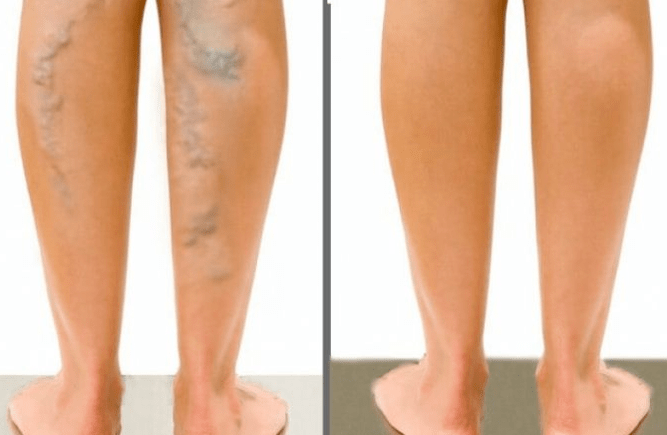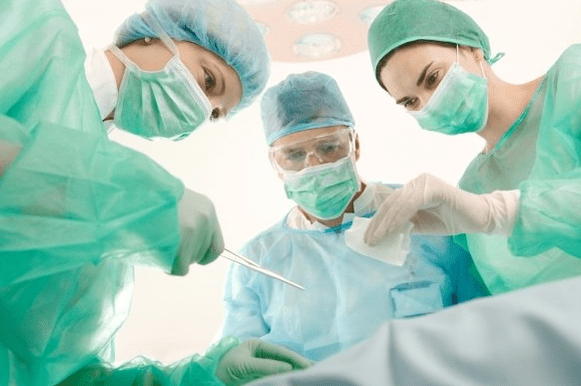Many people are familiar with the problem of varicose veins.In the advanced stage of the disease, they turn to surgery.There are several types of surgical intervention for varicose veins, each varies in its characteristics.Patients need to know about these nuances, possible consequences and the necessary rehabilitation.
Statistics show that every fifth person suffers varicose veins.The consequences of such a disease are extremely uncomfortable, so it must be treated.Surgery is a cardinal method because patients strive for fear of its need.
If the patient agrees to operate, he takes several advantages:
- Selection of Methodology: There are several types of surgeries with such a disease that it offers an individual approach to each patient;
- To get rid of the problem quickly;
- Painless (all manipulations are performed under anesthesia);
- After the rehabilitation period, you can return to a normal life, which was once impossible due to problems with the feet;
- Modern methods are low -traumatic and give a cosmetic effect.

An operation is always an intervention, so patients often affect doubts about its necessity.Such treatment really has disadvantages:
- the risk of being among the small percentage of people who did not help;
- the need for rehabilitation;
- Possible consequences;
- Risk of relapse;
- Cost: With wide lesions or choosing a modern methodology with a cosmetic effect, you will need to participate with a certain amount of money.
Symptoms of varicose veins can indicate dangerous changes in the venous system, which can lead to serious complications to death.In this case, the operation is needed.
In removing veins with varicose veins, they use certain indications:
- Acute thrombophlebitis;
- pathological expansion of subcutaneous veins;
- Varicose expansion of subcutaneous veins with increased foot fatigue, pas transplant or swelling;
- increased trophic changes in soft tissue with the ineffectiveness of conservative treatment;
- the emergence of trophic ulcers;
- Damaged blood flow.
Surgical intervention involves the use of various medicines (anesthesia, anesthesia, disinfection), so the patient should warn specialists of subjugated or chronic diseases, an allergic reaction to any substance.It is important to report those medicines that are currently taken.Even vitamins and dietary supplements are important.
If the skin in the area of surgery is damaged, there are hematomas, ulcers or abscesses, then preliminary treatment is needed.A specialist appoints it.
Before the procedure itself, it is necessary to prepare the area to be operated:
- Wash;
- Remove the varnish on the nails;
- Brown hair in the legs, other ways of waxing cannot be used;
- If there is general anesthesia - to make a cleaning enema the day before.
After surgery to remove the varicose veins in the legs, you will need rehabilitation, so you need to prepare and get comfortable clothes, shoes and essential items with you.
Methods of operational removal of varicose veins in the legs
Modern medicine offers many opportunities for surgical treatment of varicose veins.Resort in the following options:
- phlebectomy;
- microflebectomy;
- strip;
- sclerotherapy;
- Laser coagulation.

Each methodology has its own characteristics.The algorithm of the procedure is also different.
This is the name of the operational removal of the subcutaneous veins, which are pathologically expanded.After such surgery, the blood flow is normalized, and the removal of swollen veins provides a cosmetic effect.
Anesthesia for surgery can be local or general.They choose a way of anesthesia individually, focusing on the patient's characteristics and the volume of future manipulations.
Separately, a complex phlebectomy must be considered, joining several methods immediately.Each stage of such an intervention can be an independent operation:
- The intersection.This term is called the process of coating and removing the affected area.For large subcutaneous veins, proximal junction is performed, for small subcutaneous - distal.
- Stripping.This manipulation is also known as saphenectomy.During the procedure, luggage of the affected vein is removed.
- Flood of perforant veins.Is supracic or phase.The first option means fascia dissection and is considered less traumatic.
- Miniflebectomy.At this stage, the varicose joints or single veins of the branches, which are affected by varicose veins, are removed.For such intervention, small puncture is made.
How does phlebectomy surgery occur to remove varicose veins?The effect of full presence on the operation will provide this video:
This procedure is also called miniflebectomy.The procedure takes its name due to minimal intervention manipulations-All manipulations are performed through small puncture.
After the perfect beer, the affected ship is extracted with a special blow.Then it is crucified by the clips and removed.
After surgery, puncture is sealed with a bactericidal piece.Be sure to wear compression linen - selected individually.
How simple and quickly a microflebectomy is performed, you can see by watching this video:
Such surgery is soft, as for its purposes small cuts are done at the ends of the affected vein.On the same day, the patient can go home.
Depending on the variety of surgery, the location of the cuts varies: one is always performed in the popliteal fossa area, and the other in the groin area or ankle.
Recently, another type of such manipulations emerged - cryostropping.During surgery, only a cut is made through which the cryosond is presented.Due to the low temperature effect, the vein is frozen with the working part of the probe.This allows you to remove it and take it out.Due to tissue cooling, vessels are narrowing, therefore, after surgery, hematomas or bleeding do not occur.
Some experts do not consider this technique as surgical intervention, as it consists of injections.
This technique is absolutely painless.The patient does not need prolonged rehabilitation, and after manipulation, it is even necessary to walk.Such an intervention practically does not cause complications.
Laser technologies are increasingly gaining popularity in medicine.To use laser for varicose veins, you must first do certain tests.Laser coagulation is called an endovasal operation.
Laser radiation provides prison, that is, the climbing of the affected vessels.This is due to the heating of their interior walls.After such surgery, the stitches do not need to be done - the puncture place is closed with a bandage.
Want to make sure that the efficiency of wiping the veins with a laser?Then watch this video:
The characteristics of the rehabilitation period depend on what method the operation for varicose veins was performed.Small traumatic manipulations allow the patient to heal and begin the usual life much faster.
In any case, it is necessary to follow certain rules:
- Make clothing with an elastic bandage.This measure is needed in the first days after surgery.Thanks to the elastic bandage, the vein position is fixed.
- Wear compression linen.Golf dress or such socks should be round -clock.Such a measure is necessary to restore blood flow.The period during which to be worn from such linen is individually determined.It usually requires no more than 2 months.
- Reception of venotonics.Such drugs have an angioprotective effect, that is, strengthen the venous walls and restore their tone.
- Moderate physical activity.Large loads should be avoided, but muscles should develop.To do this, the use of physiotherapy exercises - any exercise must agree with the doctor.

- More vitamin C. It is necessary to strengthen immunity and reduce swelling.Black, kiwi and citrus sliders should be included in force.
- The use of seafood.Otters are not available to everyone, but everyone can enrich diet or algae.Such products are needed to strengthen the vascular walls and increase their tone.
- Turn on products with gambling.These include garlic, onions, olive oil, lemon, cherry, cherry and red seeds.Such food normalizes blood clotting, which is important in preventing blood clots.
- Plant strands.They are found in lentils, oatmeal, apples, celery and leafy vegetables.These products are needed to normalize the gastrointestinal tract - violations in its work sometimes increase the risk of varicose veins.
- Eat honey with nuts, hazelnuts or chestnuts.This mixture increases the elasticity and elasticity of the vascular walls.
- Observe the way of drinking.In addition to plain water, it is worth consuming herbal teas and freshly squeezed juices.
- Alcohol rejection.
- Less salt.
- Rejection of sweets, pastries, carbonated drinks, fatty meat, smoked and spicy dishes, fried foods.
It is important to remember that if problems with the veins, it is necessary to normalize and maintain their weight.This is especially important after surgery to reduce the risk of relapse.Proper nutrition should become a way of life.
- Relap of the disease.It is due to a predisposition to varicose veins.Often, patients themselves provoke such a complication with their own way of life.
- Wounds.This complication is inevitable after phlebectomy.It can be avoided if the surgery is low -traumatic, but sometimes, according to indications, only a cardinal intervention can be performed.
- Thromboembolism.
- Nerve damage.Can occur during surgery.This complication is extremely rare.
- Disestration.This means a change in the perception of stimuli.For example, the cold can be perceived with heat - and vice versa.
- Perforation of venous walls.
- Burn (laser coagulation).
Modern medicine offers different methods of surgical intervention for varicose veins.Each technique has its advantages and disadvantages, but it is necessary to choose a suitable option individually for each patient.A prerequisite for almost any surgery to remove veins is compliance with the rehabilitation period rules.
What types of operations are performed with varicose veins, and how does the post -surgery period pass
Varicose veins (varicose veins) are a disease that affects blood vessels.It spreads more often in women.The causes of the show can be varied.This is due to the blockage of the veins, due to the poor blood flow.Varicosis is hereditary in nature, but at the same time arises due to various factors, for example: sitting work, overweight, pregnancy and others.When the ships lose their former elasticity, they expand and form the joints.With age, varicose veins are increasingly, so you need to contact specialists.Let's hope that "will pass" is not worth it.It will not pass!
Today, the drug is highly developed, so vascular surgeons perform operations for varicose veins of the lower extremities in several ways, depending on the severity and phase of varicose veins neglect.This is all selected individually.On examination, the doctor will advise which method of performing a varicose veins surgery will be optimal, and speaks of their passage, and then the person decides himself.
Eachdo method of operation to remove varicose veins in the foot has its advantages and disadvantages.A traditional operation is a part of the skin along the sore vein.Mostly, the result will be one hundred percent, but the wounds along the entire foot will remain.Modern minimum invasive operations are often done - with a minimum number of cuts.Here - there will be almost no wounds, but consequences can occur in the post -surgery period.
Methods and types of operations to remove varicose veins in the foot:
- Flabectomy.This is a method of traditional intervention when expanding the veins.It is used for advanced phases of varicose veins when all the veins are affected, the surface of which is removed.As a rule, after such surgery, the veins and joints no longer appear and do not disturb, but the wounds remain.
- Laser coagulation.The surgeon adjusts the inner wall of the vein using special laser equipment, as a result of which lumen arises in Vienna.
- Microfleetomy.This is a partial method when the affected areas of the veins are removed through small games.
- Stripping.Vienna is completely removed, using a probe.It appears at the beginning of the vein and appears at the bottom.Thus, some cuts come out, and the vein turns out and removes.The displacement is most often performed to remove the vein from the inguinal folding to the knee hole, or from the knee hole to the ankle.
- With the advanced phase of vein with varicose and thrombophlebitis pronounced
- If varicose lumen is more than 1 cm in diameter
- With a larger volume of damaged veins
- In the presence of large nodes
When the varicose veins in the legs are not started too much, the operation to remove it is easier and without consequences, which is why it is important not to build ingredients for years, but consult a doctor.
Indications and aftermath after surgery for varicose veins
Surgical intervention for varicose veins is a very popular procedure because it is rarely possible to overcome such a disease without surgery.Needed varicose veins definitely require surgery, and in the early stages, the doctor advises procedures and exercises to strengthen the veins.In any case, the doctor, in each individual case, will weigh the pros and cons, before performing varicose veins surgeries.
The main indications for the operation for varicose veins of the lower extremities:
- varicose veins, accompanied by increased fatigue and swelling of the feet;
- varicose veins, which has reached the stage of trophic ulcers;
- violation of blood flow (sometimes without varicose veins);
- pathologically enlarged subcutaneous veins;
- Thrombophlebitis.
It is worth remembering that only a specialist will see the full picture, and only he can say if the operation for varicose veins is for you!























